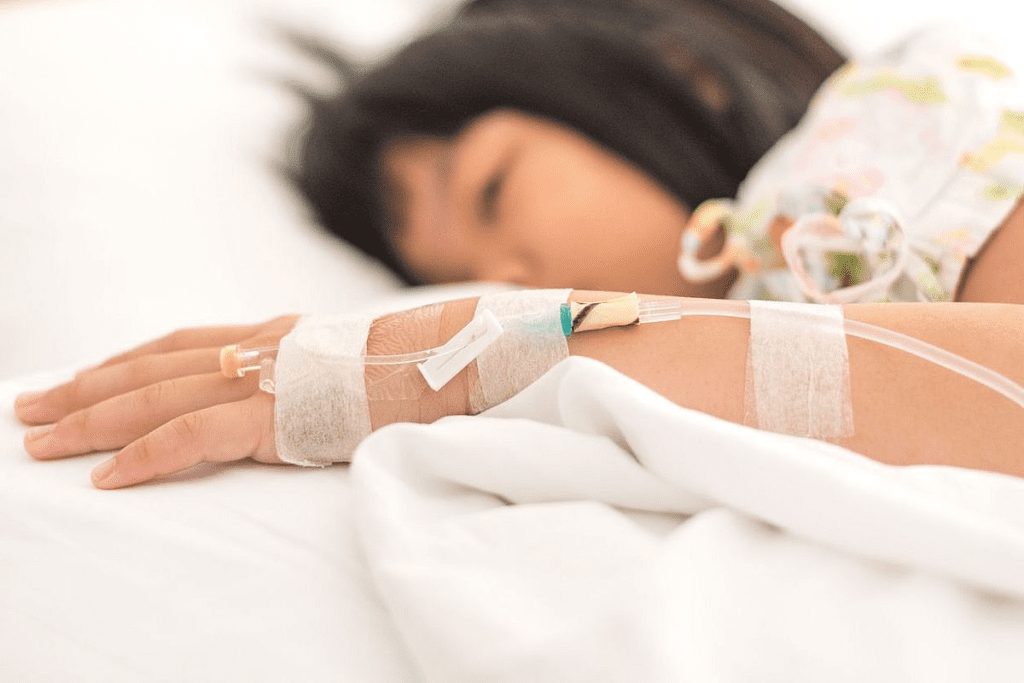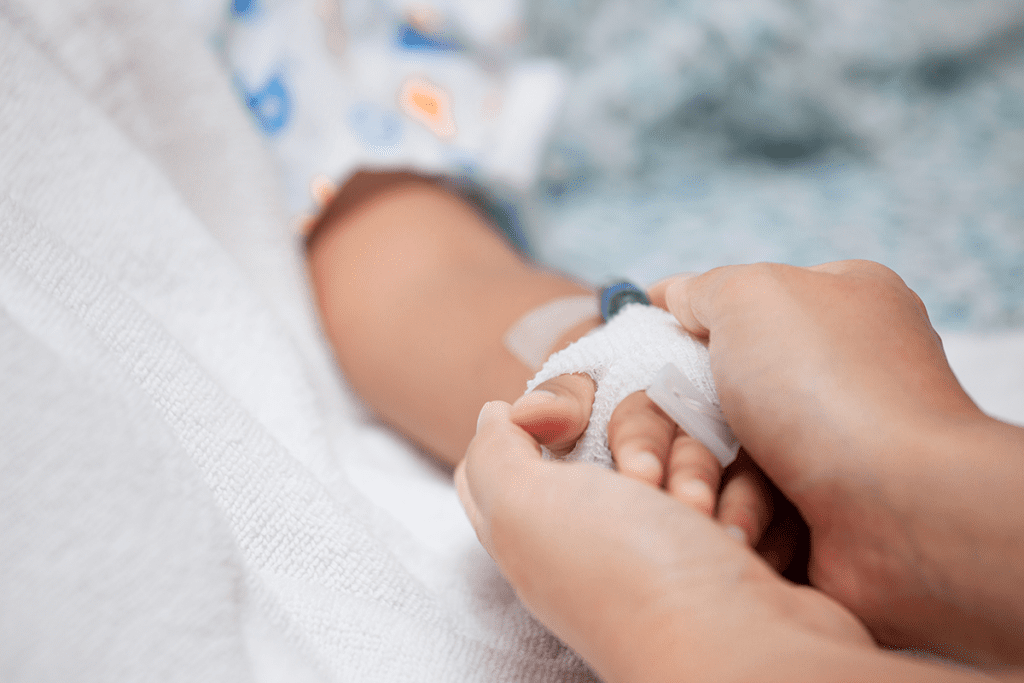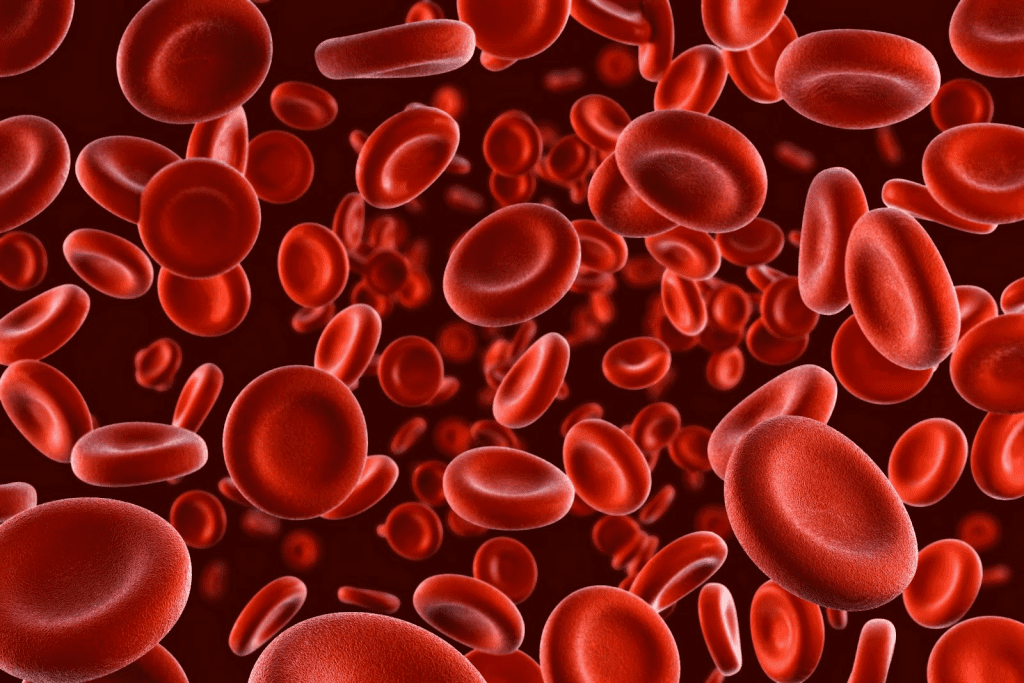Last Updated on November 13, 2025 by
Thanks to new treatments and care, childhood blood cancer is now often curable. This change has come from advances in pediatric oncology. The most common cancer in kids, leukemia, has seen a big improvement in survival rates.
The U.S. SEER Program reports a 5-year relative leukemia survival rate of 86.3%. For Acute Lymphoblastic Leukemia (ALL), survival rates in high-income countries are over 90%.

At LivHospital, we aim to give top-notch healthcare to families worldwide. Our goal is to offer the latest treatments and care with kindness. We’re hopeful about the future for kids with blood cancer thanks to these advancements.
Blood cancer in kids, like leukemia, is a complex issue. We need to know its types and symptoms. We’ll look at the common blood cancers in children, how they differ from adult types, and the early signs parents should watch for.
The most common blood cancers in kids are Acute Lymphoblastic Leukemia (ALL) and Acute Myeloid Leukemia (AML). ALL is the most common, making up about 80% of cases. AML is less common but serious and needs quick treatment.
Other rare types include Chronic Myeloid Leukemia (CML) and Juvenile Myelomonocytic Leukemia (JMML). These are rare in kids.
Children’s blood cancer is different from adults’ in many ways. Kids’ bodies are growing, and their cancers are more aggressive but also more treatable. Adult leukemia is often slower and harder to treat.
The biology of leukemia in kids can also differ. Certain genetic markers can affect how the disease progresses and how well it responds to treatment.
It’s important to recognize early signs of blood cancer in kids. This can lead to quicker diagnosis and treatment. Common symptoms include:
For more detailed information on the survival rates of children with leukemia, you can visit the American Cancer Society’s page on leukemia survival rates.

It’s important to know the different types of leukemia in kids to find the best treatment. Leukemia is a cancer that affects the blood and bone marrow. It’s the most common cancer in children. There are several types, based on the cell type and how fast the disease grows.
Acute Lymphoblastic Leukemia (ALL) is the most common leukemia in kids, making up about 80% of cases. ALL is when the body makes too many immature lymphocytes. This makes it hard for the body to fight off infections. Thanks to better treatments, the cure rate for ALL is now over 90% in many places.

Treatment for ALL includes a mix of chemotherapy. The treatment plan is based on the child’s risk level. This depends on their age, how many white blood cells they have at diagnosis, and how well they respond to treatment.
Acute Myeloid Leukemia (AML) is less common but harder to treat. It’s when abnormal myeloid cells grow too fast in the bone marrow. AML treatment often includes strong chemotherapy and sometimes a bone marrow transplant.
The survival rate for AML is getting better. This is thanks to better treatments and care. But AML is harder to cure than ALL. The 5-year survival rate for AML is between 50% and 70%, depending on the type and how well the child responds to treatment.
There are other blood cancers in kids, like Chronic Myeloid Leukemia (CML) and Juvenile Myelomonocytic Leukemia (JMML). CML is rare in kids and involves the uncontrolled growth of myeloid cells. JMML is a serious disease that affects young kids and is hard to treat.
The outlook for these rare leukemias varies. It depends on the type, the child’s age, and how well the treatment works. New treatments like targeted therapies and immunotherapies are giving kids with these cancers new hope.
Recent advances in medicine have greatly boosted leukemia survival rates for kids around the world. These gains show how far we’ve come in understanding and treating leukemia.
The 5-year survival rate for childhood leukemia has jumped up a lot. Today, kids with leukemia have an 86.3% chance of surviving five years. This is a big leap forward from before, thanks to better treatments and care.
“The progress we’ve made in treating childhood leukemia is truly remarkable. With current treatments, we can now offer hope to families that was previously unimaginable,” According to a medical expert, a leading pediatric oncologist.
Survival rates change a lot based on the type of leukemia. For example, kids with Acute Lymphoblastic Leukemia (ALL) do much better than those with Acute Myeloid Leukemia (AML). Knowing these differences helps us tailor treatments better.
In the last few decades, survival rates for kids with leukemia have really gone up. Better chemotherapy, targeted therapy, and care have all played a part. This has led to fewer deaths, giving hope to patients and their families.
“Advances in medical research and treatment have transformed the outlook for children with leukemia. We are committed to continuing this progress,” , a renowned expert in pediatric oncology.
Even with the overall rise in survival rates, there are big global disparities in leukemia treatment outcomes. Kids in rich countries usually get better care and do better. But kids in poor countries face big challenges like less access to healthcare and late diagnoses.
We need to work together to fix these disparities. We must improve healthcare worldwide and make sure everyone gets the best treatments.
Modern medicine has made big strides in treating pediatric blood cancer. This brings new hope to young patients and their families. The treatment for children with blood cancer has changed a lot. Now, it includes many new and effective ways to help.
Chemotherapy is a key part of treating pediatric leukemia. Multi-agent chemotherapy protocols use several drugs together. This method has greatly improved survival rates.
Using different drugs together helps target cancer cells better. It also lowers the chance of cancer becoming resistant to treatment. This leads to better results for patients.
New treatments like targeted therapies and immunotherapies are also being used. These treatments aim to hit cancer cells directly. They try to avoid harming healthy tissues.
Immunotherapy, which uses the body’s immune system to fight cancer, is very promising. It’s showing great results in treating some types of pediatric leukemia.
For some kids, stem cell transplantation might be a good option. This involves replacing the patient’s bone marrow with healthy stem cells. These can come from the patient or a donor.
Stem cell transplantation can be a strong treatment for aggressive or relapsed leukemia. It offers a chance for a cure for some patients.
Improvements in supportive care have also helped a lot. Supportive care helps manage treatment side effects. It aims to improve the patient’s quality of life.
These improvements include better infection management, improved nutrition, and more help for the mind. This support is for patients and their families.
Several factors influence how well leukemia patients do with treatment. Knowing these factors helps us create better treatment plans. This can lead to better results for patients.
How old a patient is when they get leukemia matters a lot. Kids who get it young usually do better than older kids. They often respond well to treatments, which helps them get into remission.
Age affects how well treatments work because of differences in leukemia cells. For example, younger kids might do better with some chemotherapy.
Genetic and biological markers are key in figuring out how well a patient will do. Some markers mean a patient might do better or worse. We use special tests to find these markers and plan treatments.
Genetic testing is very important in treating leukemia. It helps us guess how a patient will react to treatments. This helps us make better choices for their care.
How well a patient does with the first treatment is a big clue about their future. Patients who get better fast usually live longer. We watch how patients do with the first treatment closely.
Checking how well treatment works early helps us find new ways to help patients. This can make a big difference for those who don’t do well with standard treatments.
Getting care at specialized pediatric cancer centers is very important. These places have teams of experts who know a lot about treating leukemia in kids. They offer a lot of support to patients and their families.
Getting the right care means access to new treatments and clinical trials. Treating patients at these centers can lead to better results and outcomes in the long run.
Leukemia survivors face new challenges after treatment. They need careful management and support. Understanding that recovery is ongoing is key.
It’s important to know the difference between remission and cure. Remission means no cancer is found in the body. A cure means the cancer won’t come back. For kids, long-term remission is a big step toward being cured, but it takes years to confirm.
The terms “remission” and “cure” have different meanings. They depend on the leukemia type and the patient. Knowing this helps manage expectations and make informed care decisions.
Childhood leukemia survivors may face late effects from treatment. These can include organ damage and secondary cancers. For example, some treatments can harm the heart or affect fertility.
It’s important for survivors and doctors to know about these effects. Regular check-ups help catch and manage them early.
Follow-up care is key for survivors. It includes regular check-ups and screenings. Survivors should work with their healthcare team to create a care plan that fits their needs.
This plan might include tests for heart health, fertility counseling, and cancer checks. Being proactive helps reduce risks and improve life quality.
Psychosocial support is vital for young survivors. It helps them deal with the emotional and psychological effects of cancer. Support comes from family, friends, mental health professionals, and groups.
The journey through leukemia can be traumatic. Providing the right tools and resources is essential. By supporting their psychosocial needs, we help them live healthier, happier lives.
Medical research and treatment have made big strides for kids with leukemia. Today, many can be cured, thanks to effective treatments. This brings hope to families everywhere.
With each discovery, the answer to “can leukemia be cured?” gets a yes. This is true, thanks to advances in treating kids. The future for kids with leukemia is looking up.
Getting to top-notch healthcare and keeping research going is key. It helps kids live longer and better lives. We’re dedicated to giving kids with leukemia the best care possible.
Acute Lymphoblastic Leukemia (ALL) is the most common leukemia in kids. It makes up about 80% of all leukemia cases in children.
Yes, many children can be cured of leukemia. Thanks to better treatments, the 5-year survival rate for ALL is over 90%.
Kids with leukemia might get sick often, feel tired, or lose weight. They might also have bone pain, anemia, or bruise easily.
AML is more aggressive and needs quick treatment. It’s different from ALL in its cell type and treatment needs.
The 5-year survival rate for childhood leukemia is about 85-90%. ALL has a better survival rate than AML.
Treatment success depends on age, genetic markers, and how well the body responds to treatment. Access to pediatric cancer centers also matters.
Modern treatments include chemotherapy, targeted therapies, and immunotherapies. Stem cell transplants and better care for side effects are also used.
Survivors may face late effects like organ damage and secondary cancers. They need ongoing care and monitoring.
Leukemia can be cured in many cases. But some patients need ongoing care to prevent cancer from coming back.
Survival rates have greatly improved thanks to better treatments. This has led to higher cure rates and better outcomes for patients.
Yes, there are disparities in treatment outcomes worldwide. Access to healthcare and treatment options varies, affecting survival rates.
Subscribe to our e-newsletter to stay informed about the latest innovations in the world of health and exclusive offers!